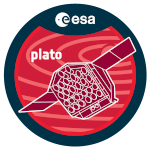Convective mixing and the interaction between convectively and radiatively stratified layers in stars are physical processes which are particularly difficult to model. Their phenomenological modelling is too inaccurate and too sensitive to model parameters to be considered a satisfactory approach. Especially the latter depend on a variety of properties of the star to be modelled which implies this to be a descriptive rather than a predictive methodology.
Recent advances to proceed beyond such strongly limited models are achieved along two different avenues: numerical, hydrodynamical simulations and statistical models (non-local convection models, Reynolds stress models). Strengths and limitations of both methodologies will be outlined including some ambiguities and pitfalls.
For the numerical simulations particular attention will be given to aspects of simulation resolution, thermal relaxation, and self-consistency in the context of a full stellar model. For the statistical models the role of kinetic energy dissipation will be discussed as well as its consequences for the physical completeness of non-local convection models.
The limitations of either approach would benefit from stronger observational constraints. Some options how to improve on those will be suggested. PLATO might provide the key to such progress.

 PDF version
PDF version
